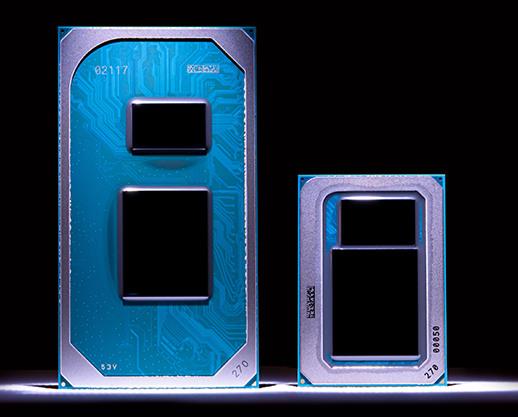Intel talked about breakthroughs in artificial intelligence (AI) that pave the way for autonomous driving, a new era of mobile computing at CES 2020.
Intel gave a preview of Tiger Lake at CES. Intel bakes these chips at an improved 10nm process and integrates an Xe- gpu. Intel also shortly demonstrated the DG1 video card. Tiger Lake is to succeed Ice Lake and is intended for thin and light laptops. The processors probably appear in U and Y models.
Intel promises that the chip offers big perf improvements over Ice Lake. The processors are among the first to have Xe GPUs. With Tiger Lake is would be possible to game at Full HD. The platform will have integrated support for the fourth generation Thunderbolt, which should be 'four times as high as USB 3'. The first laptops with Tiger Lake have yet to appear this year, but Intel did not provide any further details during the keynote.
-- Intel --
Intel CEO Bob Swan kicked off today’s news conference by sharing updates from its Mobileye business, including a demonstration of its self-driving robocar navigating traffic in a natural manner. The drive demonstrated Mobileye’s approach to deliver safer mobility for all with a combination of artificial intelligence, computer vision, the regulatory science model of RSS and redundancy through independent sensing systems.
Swan also highlighted Intel’s work with the American Red Cross and its Missing Maps project to improve disaster preparedness. Using integrated AI acceleration on 2nd Generation Intel Xeon Scalable processors, Intel is helping the American Red Cross and its Missing Maps project to build highly accurate maps with bridges and roads for remote regions of the world, which helps emergency responders in the event of a disaster.
“At Intel, our ambition is to help customers make the most of technology inflections like AI, 5G and the intelligent edge so that together we can enrich lives and shape the world for decades to come. As we highlighted today, our drive to infuse intelligence into every aspect of computing can have positive impact at unprecedented scale,” Swan said.
Intel Executive Vice President Gregory Bryant announced the following:
- First look and demonstration of the newest Intel Core mobile processors, code-named “Tiger Lake”: Tiger Lake is designed to bring Intel’s people-led vision for mobile computing to life, with advances in "every vector and experience that matters." With optimizations are spanning the CPU, AI accelerators and discrete-level integrated graphics based on the new Intel Xe graphics architecture, Tiger Lake will deliver double-digit performance gains, massive AI performance improvements, a huge leap in graphics performance and 4x the throughput of USB 3 with the new integrated Thunderbolt 4. Built on Intel’s 10nm+ process, the first Tiger Lake systems are expected to ship this year.
- Intel Vice President of Architecture for Graphics and Software Lisa Pearce provided insight into the progress on the new Intel Xe graphics architecture, which will provide huge performance gains in Tiger Lake, and previewed Intel’s first Xe-based discrete GPU, code-named “DG1.”
- Updates on Intel’s “Project Athena” program, including the first Project Athena-verified Chromebooks: Project Athena-verified designs have been tuned, tested and verified to deliver benefits spanning battery life, consistent responsiveness, instant wake, application compatibility and more. Intel has verified 25 Project Athena designs to date, and Bryant announced an expanded partnership with Google that has already resulted in the first two Project Athena-verified Chromebooks, the ASUS Chromebook Flip (C436) and the Samsung Galaxy Chromebook. Intel expects to verify approximately 50 more designs across Windows and Chrome this year and deliver a target specification for dual-screen PCs.
- Dual screens and a foldable design: Through co-engineering efforts with OEM partners, Intel helps deliver category-defining devices based on Intel Core processors. This includes new dual-screen and foldable designs like the Lenovo ThinkPad X1 Fold, which leverages the Intel Core processor with Intel Hybrid Technology (code-named “Lakefield”) expected to ship midyear, and the Dell Concept Duet. Bryant also previewed Intel’s latest concept device, a foldable OLED display form factor, code-named “Horseshoe Bend.” Based on Intel’s upcoming Tiger Lake mobile processors, the design is similar in size to a 12-inch laptop with a folding touchscreen display that can be opened up to more than 17 inches.
Intel Executive Vice President Navin Shenoy announced that 3rd Generation Intel Xeon Scalable processors, coming in the first half of 2020, will include new Intel DL Boost extensions for built-in AI training acceleration, providing up to a 60% increase in training performance over the previous family.



